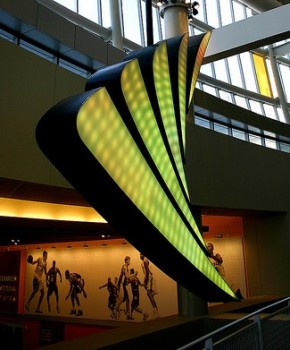Phandroid
As Sprint guarantees unlimited data for life, Verizon CEO says it’s dead — do you still care?
It’s been a little over a year since the big guns in American wireless — also known as Verizon and AT&T — decided to drop unlimited data in favor of a tiered approach. Users fought and fought and made their voices heard, but the carriers weren’t budging. Only one carrier decided to stay the truly unlimited track, and that carrier is Sprint.
Even with the Now Network using the promise of unlimited data as a now-unique angle to attract more customers, many had doubts that Sprint would keep the act up for much longer. The carrier never really promised they’d never pry unlimited data plans away from us, but now they are — Sprint’s recent wave of advertising is guaranteeing unlimited data for life.
It’s a bold stand in a market where pressure to make money is on, with Sprint being no stranger to shaky futures (Japanese wireless player Softbank put up major bucks to buy up a majority of the company). Verizon believes that, too, with CEO Lowell McAdam restating his company’s stance on unlimited data — it’s not sustainable for long-term success.
What does he mean by that? Well, his thoughts are “if you allow unlimited usage, you’ll run out of gas.” He’s referring to Verizon’s reputation of being America’s largest and most reliable network, a claim that definitely has merit.
He believes offering unlimited data would negatively affect Verizon’s positioning as a premier carrier for those who value a large voice and data footprint with little to no downtime. McAdam cites the growing popularity of streaming video, bigger game and app downloads, and increased web browsing.
All of this mobile multimedia wasn’t nearly as popular 5 years ago as it is now, so there’s reason to consider his angle. It’s that reputation that has had Verizon sitting as America’s top carrier for a long time despite being one of the highest priced.
 “We never have and never will lead on price,” says McAdam, declaring that Sprint’s great value alone isn’t enough to put much competitive pressure on Verizon. Does McAdam speak truth? Is unlimited data worth more than a reliable network? Is it impossible to have both, or can you only achieve one without the other?
“We never have and never will lead on price,” says McAdam, declaring that Sprint’s great value alone isn’t enough to put much competitive pressure on Verizon. Does McAdam speak truth? Is unlimited data worth more than a reliable network? Is it impossible to have both, or can you only achieve one without the other?
With Sprint’s slim 4G footprint and abhorrently slow 3G network, it certainly feels that way right now. Let’s hope their plans to improve things with “Network Vision” can yield the type of performance carriers like AT&T and Verizon have been able to deliver over the years.
It’s been a while since we asked you guys, so we want to hear it: do you still care about having unlimited data or are you all about network speed, availability and reliability? With most of the world dealing with tiered data now it certainly doesn’t sound like Verizon’s death knell to unlimited data will hurt them anytime soon.
[via CNet]
iPhone 5 display is nearly 2.5 times more responsive than Android devices according to new benchmark

Display responsiveness is one of those “little” areas many of us forget to mention when drafting up 5,000 word reviews on mobile devices. Whether this was always due to there being no real way to measure display responsiveness, or because it might sound too nit-picky to even mention. In any case, it really is a key component to the user experience on mobile devices.
I’ve seen it mentioned numerous times in my dealings with iPhone users. One of the things they love most about their phone is how “sensitive” the display is to their touch. More than often, they don’t even know how to define it and in some cases it’s simply attributed to Apple’s “magic” sprinkled atop every iPhone and sealed with a kiss from Jony Ive. Up until now there was nobody was crazy enough to actually attempt to measure this often overlooked feature. But someone finally has.

The folks at Agawi — a game and app streaming firm that provides services for Android, iOS, and Windows Phone devices — has put together a benchmark they call TouchMark. This benchmark measures touchscreen latency on a variety of mobile devices and you might be surprised to see the results.
According to their tests, the iPhone 5 performed nearly 2.5 times better than some of the top Android devices on the market at registering onscreen touches, only 50 milliseconds to be exact. Even the highest rated Android device of the bunch, the Samsung Galaxy S4, took an average of 114 milliseconds to respond to touches. Compared to the much slower iPhone 4 with 85 milliseconds and we’re starting to see why iPhone users always felt the quality of the iPhone display trumped the competition.

What does this mean to you? Well, it depends on you expect from a high-end Android device. Have you ever quickly tapped your display and noticed it didn’t register your touch? Perhaps you were jamming at the virtual keys in a heated Hangout conversation and missed a few letters. It’s the little things like this that can make a big impression on the overall quality the end user feels they’re getting from their mobile device. Now that Project Butter finally brought Android’s animations up to speed with iOS, I think it’s time OEMs start focusing on responsiveness.
[Appglimpse | via Venturebeat]




0 comments:
Post a Comment